History of Manchester
Revolution, Destruction, and Rebirth.

1760s~1840s
Mancester emerged as a prominent center of the Industrial Revolution and become the first industrial city in the world. The population swelled in this period and brought social issues. The first wave of regeneration occurred in the late 19th and early 20th centuries in response to these challenges.

1940
Manchester was hit by two nights of German air raids during World War II, referred to as the 'Christmas Blitz'. Commercial centres and residential areas were most badly affected. The second wave of urban regeneration happens thereafter.

1996
The IRA detonated a 1,500-kilogram lorry bomb on Corporation Street in the centre of Manchester. This tragic event acted as a catalyst for mordern regeneration efforts.
Demographic changes
Greater Manchester as the leading role in the North West England.
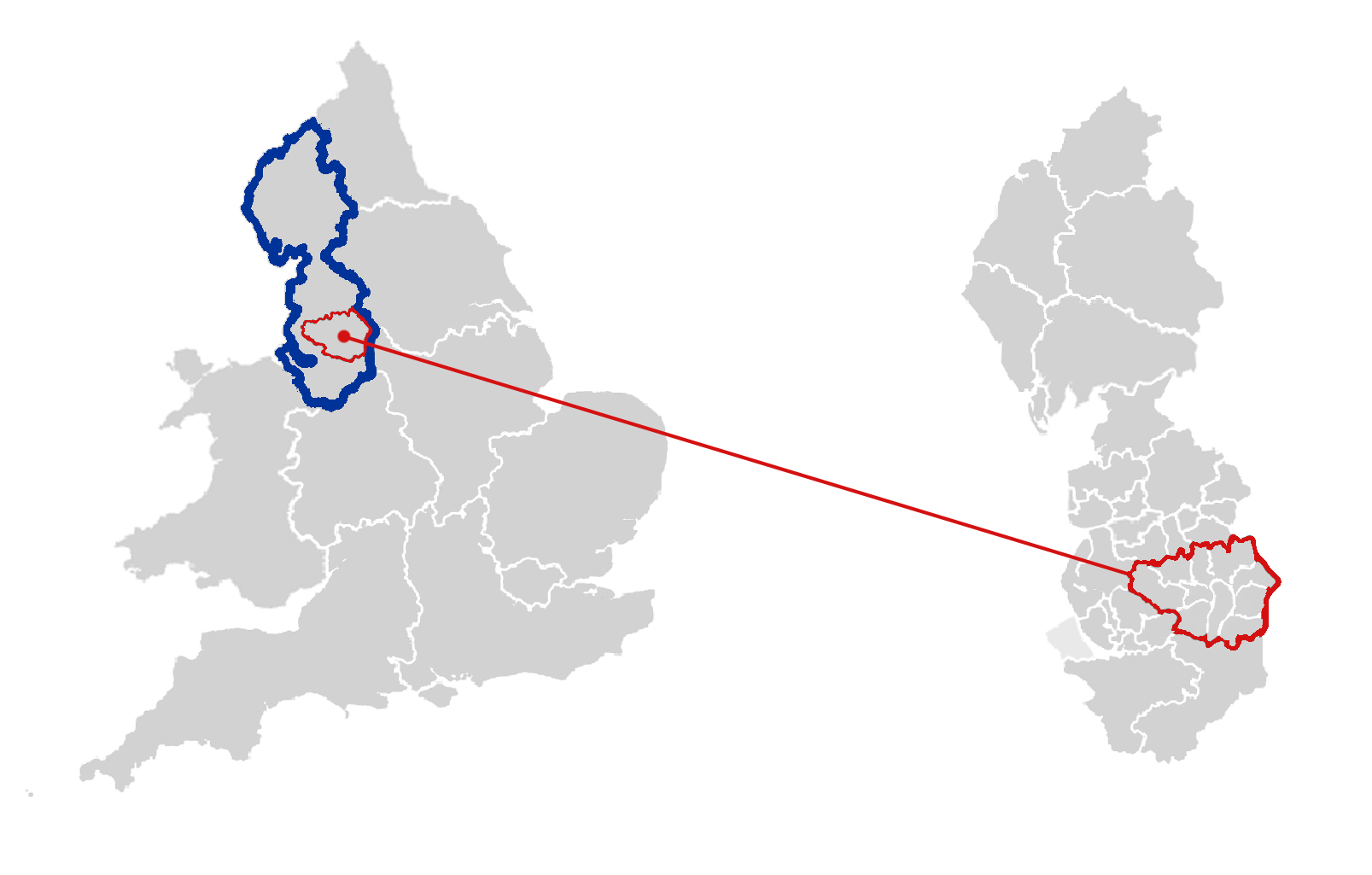
“A phoenix rise”: population prosperity after the big decline
The comparison between the charts reveals that the Manchester area underwent significant urbanization during the early 19th century, especially in the industrial revolution period. However, after World War I in 1931, the population started declining and continued to do so for about 40 years. It wasn't until the 1990s that urban regeneration projects sparked a positive upturn in population growth, leading to the vibrant boom experienced in the 21st century.
As the world's first industrial city, Manchester experienced rapid population growth after the industrial revolution in 1860s and then, a significant population decline in the first half of the twentieth century. In the 1990s, with the beginning of urban regeneration, the graph on the right clearly shows the turning point from population loss to growth.
Spatial population change
The bubble map depicts the spatial distribution of Greater Manchester's population over time. It shows the significant population growth during the industrial revolution, followed by a recession after World War II. In the 1970s, there was a noticeable expansion in suburban areas and neighboring cities like Leeds and Sheffield. By 2021, the population gap between the 10 boroughs in Greater Manchester had significantly diminished.
Changes in transportation
The transportation system in Greater Manchester has evolved over time, transitioning from canals to rails, trams, and buses. The Metrolink, launched in 1992, now serves as the central transportation network, expanding to cover the city center, suburbs, and neighboring towns. Alongside the Metrolink, buses play a vital role in providing extensive coverage and last-mile connectivity.
Changes in deprivation
The map provides users with a flexible tool to uncover various information and draw conclusions. For example, most intuitively, the map shows that overall employment and education have gotten better across Greater Manchester, while crime and health conditions have both become worse. Urban regeneration is particularly evident in education, as Manchester has specifically focused on improving education.
Changes in Housing Prices
The interactive map visualization depicts a gradual increase in housing prices in Greater Manchester over the selected years. As the years progress, the colors on the map gradually darken, indicating the overall upward trend in housing prices. When examining the geographical distribution, certain areas in the lower-left corner of Manchester, including Bowdon, Hale Centre, and Hale Barns, stand out with significantly higher housing prices compared to other regions.
From 2011 to 2017, there are noticeable price increases in some central areas of Manchester. Additionally, specific regions, such as St Mary's, experience particularly drastic changes in housing prices, with a rapid increase observed from 2014 onwards.
These visualized patterns suggest that the urban renewal projects and various factors have contributed to the changing dynamics of housing prices in Manchester. The high-priced areas may be influenced by factors such as proximity to amenities, affluent neighborhoods, or desirable living conditions. The observed price growth in central areas could be a result of the revitalization efforts and increasing demand for urban living. The significant price fluctuations in certain regions like St. Mary's may be driven by unique local market dynamics.
Case Study
Major urban regeneration projects are gathering in the city centre area.
Case one: MediaCityUK
This case highlights the urban regeneration of the MediaCity area in Manchester, focusing on the changes in buildings and the local economy. MediaCity is situated on the historic Manchester Docks, which played a vital role in the global textile trade.
The transformation of Media City began with the construction of the Manchester Ship Canal in 1887, connecting Manchester and Salford to the world. After the docks closed in 1982, the MediaCity project started in 2007 and officially opened in 2012, achieving significant milestones.
- Before
- Compare
- After
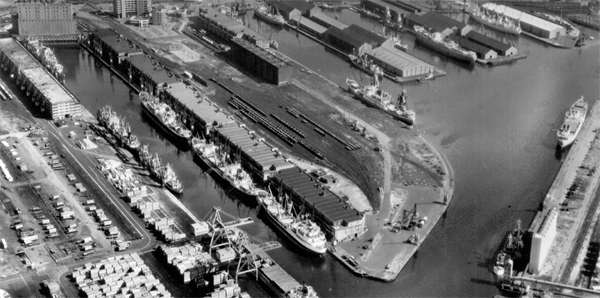
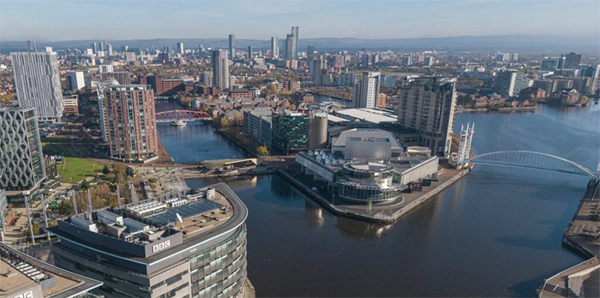
Historical photos from 1963 and 2022 showcase the transformation of Media City, including the widening of the river channel and the replacement of small dockside bungalows with towering skyscrapers.
Comparing deprivation indicators among the wards, Weaste and Seedley had the highest deprivation index in 2015, indicating the highest level of poverty. However, in 2019, while the employment and income scores decreased in Weaste and Seedley, the overall deprivation score increased, suggesting worsening conditions in other indicators. Ordsall, the main ward of Media City, consistently had the lowest level of deprivation and showed the most development. Furthermore, comparing 2015 and 2019, it can be observed that deprivation levels in Media City have continued to decrease.
Case two: Manchester City Centre
Manchester City Centre is a strategic location for these projects, serving as a catalyst for economic growth and revitalization. To ensure a comprehensive analysis, we have defined our study area based on Lower-layer Super Output Areas (LSOAs). The green-shaded regions on the map represent our study area, which includes a significant portion of the city center and encompasses the major urban renewal projects.
- Before
- Compare
- After
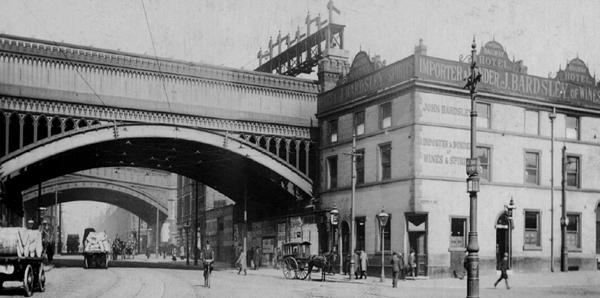
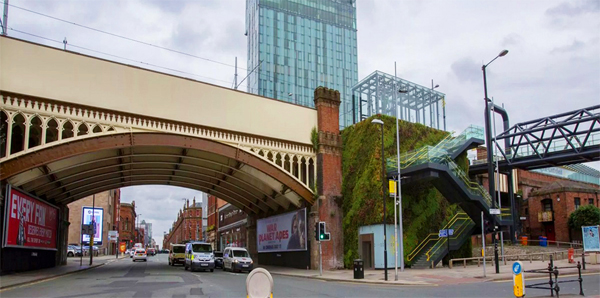
Index of Multiple Deprivation change from 2010 to 2019
The table reveals that urban renewal projects in Manchester city center have had a significant positive impact on education, employment, and income indicators, with a decrease in education deprivation and improvements in job opportunities and income levels. However, there are also areas where deprivation indices have increased, particularly in aspects such as living environment, crime rates, and housing affordability. These changes reflect both the positive and negative effects of the urban renewal projects.
The improvements in education, employment, and income can be attributed to factors such as infrastructure development and increased investment opportunities resulting from urban renewal projects. On the other hand, the negative changes in living environment, crime rates, and housing affordability may be influenced by factors like displacement, unequal distribution of resources, and disruptions during construction.
Housing Prices for different types of dwellings
The line chart shows the changes in housing prices in Manchester city center since 1995. For this analysis, we selected the central areas of the city and calculated the median prices for different types of properties. The top filters feature different colored labels representing various property types, and users can click on them to display the price trends for each property type.
The chart reveals that housing prices in Manchester have exhibited significant fluctuations over time, but overall, they have demonstrated an upward trend. It is worth noting that the prices for apartment properties experienced substantial growth from 2011 to 2018. This surge in prices can be attributed to the influence of urban renewal projects, such as the development of Media City, which stimulated a sharp increase in apartment prices in the surrounding areas.
It also provides valuable insights into the dynamic nature of housing prices in Manchester city center and the potential impact of urban renewal projects on specific property types.
Housing price changes in Manchester Central Area
Influenced by the ongoing regeneration, the housing price in the Manchester central area has changed significantly in the last two decades. This study section is the combination of case one and case two housing price conditions.
3D building view
The visualization of 3D buildings is achieved using CesiumJS 3DTiles and Google API. Upon initial load, the camera is adjusted with heading, pitch, and roll to fly directly into Media City UK building. The main interface consists of six buttons. The "Select a Ward" and "Go to Coordinate" buttons allow users to jump to the coordinates of other wards and view the selected ward's 3D status from an overhead view. The "Start Auto Rotate" and "Stop Auto Rotate" buttons control the camera's self-rotation at the current viewpoint, enabling a 360-degree panoramic view. The smooth rotation is achieved using the setInterval timing function in Javascript. The "Add Marker" button allows users to add icons by capturing clicked coordinates. The "Drawing" button also adds entities but in the form of polygon entities. By providing coordinates, polygons are generated to highlight buildings, facilitating enhanced visibility.(Please select ward first then press go to coordinate.)
Look into the future

Manchester has undergone a complete transformation of its industries as a result of urban regeneration driven by renewal projects. After urban decay and population loss, Manchester has been transformed through environmental improvement and industrial upgrading into a 'new' city with digital, media, creative and educational field as its leading industries. There are also inevitably side effects during urban regeneration, such as the increase of housing prices, crime rate, and health issues. Urban regeneration does not happen overnight. We look forward to a future in which Manchester will become a more inclusive and liveable city with the continuous progress of urban regeneration.
Team members
Please be patient, the project is loading...
If not respond, please refresh the page ^_^



